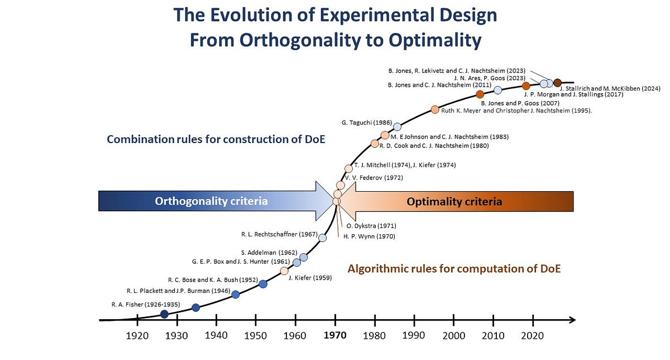Medium
9h
188

Image Credit: Medium
The Evolution of Experimental Design
- The field of Design of Experiments (DoE) has undergone a remarkable transformation over the past century, evolving from manually constructed designs to sophisticated computer-generated experimental plans.
- Classical designs of this era were characterized by their elegant simplicity. Their construction relied on systematic rules: circular permutations and combinatorial principles that could be executed with just paper and pencil.
- The 1970s marked a transformative period in experimental design, driven by the rapid growth of computing power and the emergence of algorithmic optimization methods.
- The concept of optimality criteria became central to this revolution. Different criteria were developed to address specific experimental objectives.
- New optimality criteria and algorithmic developments continue to expand the capabilities of computer-generated designs.
- This convergence has created unprecedented flexibility in experimental design.
- Modern innovations continue to emerge from both traditions. This suggests that the future of DoE will likely involve further synthesis of traditional principles with advanced computational methods.
- Definitive Screening Designs (DSDs), Orthogonal Minimally Aliased Response Surface (OMARS) designs, and Orthogonal Main Effects Screening Designs for Mixed-Level Factors (OML designs) represent advances in classical design construction principles.
- Current research explores the intersection of model-based and model-agnostic frameworks, promising even greater flexibility and efficiency in experimental design.
- These developments enhance our ability to design efficient and effective experiments across diverse fields of application.
Read Full Article
11 Likes
For uninterrupted reading, download the app